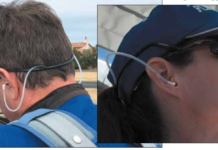Testing Oils
Let me start by thanking you for the unbiased testing and cautious enthusiasm you gave to our product, CamGuard. Your testing, while very much more severe than ours, showed directionally the same results.
I believe that corrosion is by far the leading cause of premature wear and in extreme cases, catastrophic component failure, such as cam or lifter spalling. I reached this conclusion while working for Exxon and participating in the research for their new piston aviation oil in the early 1990s.
Relating laboratory bench or engine tests to the real world is a difficult task. The goal is to increase severity while accessing the correct test regime. These results, in shorter test times with real world correlation, must be found by a protocol that is both repeatable as we’ll as reproducible by any competent laboratory.
Test-to-test repeatability is a major difficulty with corrosion testing, as anyone using the ASTM D-1748 can attest to. The DIN-50017 humidity cabinet test accomplishes not only an increase in severity and real world correlation, but better repeatability than the older ASTM corrosion test. It is for these reasons that we choose to use it as our reference corrosion test, as does the international automotive industry.
Corrosion inhibition was the major reason for the creation of CamGuard, but it also addresses the other issues of interest concerning aircraft engines and lubricants. These include superior anti-wear protection, deposit prevention and mitigation and seal protection. CamGuard is 100 percent active and most of its 11 additives can be found in the highest performance motor oils in the world.
I think you summed it up very we’ll when you stated in the title of your article, CamGuard additive improved performance of all the oils.
Edward Kollin
ASL Camguard
———-
Cheap Bonanzas
I read the article in the January 2005 issue about step-up retractables. Im curious … where did you come up with a $70,000 P-model Bonanza?
I looked in Trade-A-Plane and the earliest model I could find for that price was a 1959 K35 model. The lowest-priced P model was $77,500. Four P-models were listed: $77,500, $90,000, $109,000 and $110,000.
Martin Gomez
Via e-mail
As noted in the article, we used Aircraft Bluebook Price Digest values. Trade-A-Plane prices offer general guidance but remember, those are asking prices, not sale prices.
———-
PPC vs. Palm
Since I use both a Pocket PC and Palm PDA as aviation tools, I thought Id add my 37 cents to the PDA discussion. I have been a fan of PDAs in the cockpit since I purchased an HP200LX over a decade ago to run RMS Flightsoft in DOS. That remains my favorite aviation flight-planning application for any PDA because it allowed me while enroute to quickly create revised flightplans, either along the airways or direct using my rho-theta KNS-80 RNAV. However, RMS discontinued that version of the Flightsoft family.
I moved on to a Pocket PC and eventually RMS did the same with its Flightsoft Express. The attraction of the RMS program is that it enables me to take along the graphics and details of the flights planned on my desktop or laptop PC, but I personally don’t find it as useful as the discontinued DOS program.
I have tried many programs on the Pocket PC, but only a few of them stuck. I tried plugging a GPS into the Pocket PC, using the Flightsoft moving map and another vendors more expensive moving-map app, but the rats nest of wires and the difficulty of using a stylus in a turbulent cockpit dissuaded me. A dedicated GPS is a better solution.
PDAs are a great way to store and organize info that you want during, before or after a flight when your laptop may not be handy. My list of FSS 866 phone numbers gets used frequently. I make notes about airports (more than 300) that I have visited and keep them in a database. Having a note telling you the location of that unfamiliar airports unlit self-serve pump or unlocked bathroom can be welcome at midnight.
Recently, I bought a PalmOne Treo 600, which mates a Palm PDA with a cellphone. (I bought it for $200 on eBay, a good source if you are moderately careful.) One of its must-have features is its keyboard, which eliminates 93.6 percent of fooling with a stylus and enables a lot of one-handed operation. Having a Web browser means that I can get a graphic update of weather immediately before takeoff or even update in flight. AOPAs Airport Directory can be loaded on an SD card for quick reference.
Because it only plays on the Palm platform, I think that makes the Palm the better choice for a pilot trying to decide which one to choose. The quantity of flight-useful stuff you can replace with a PDA adds up. In addition to approach charts, airport directories, AIM, FARs, logbook, timers and an E6B, there are all kinds of computers, converters, maintenance records and reminders and even one of those clearance recorders. I can use the camera in my Treo to show my shop what the engine monitor was doing.
Debates about Palm versus PC are a bit like religious discussions. Both have their strengths and both will do useful aviation-related things. I find them invaluable as a way to organize info and reference on a long-cross country haul. However, I think that getting one with a phone, Web browser and keyboard expands its usefulness in the cockpit.
Art Friedman
Via e-mail




